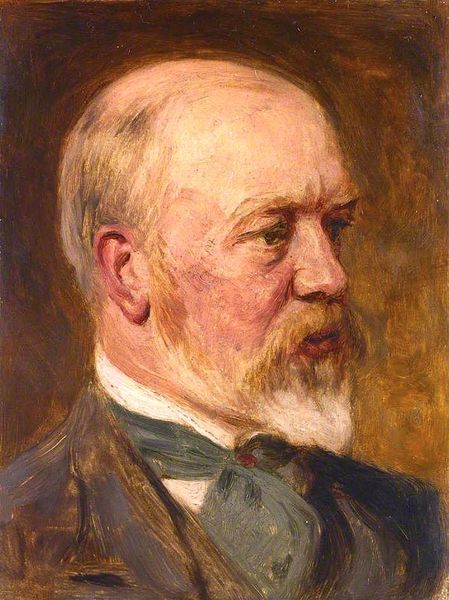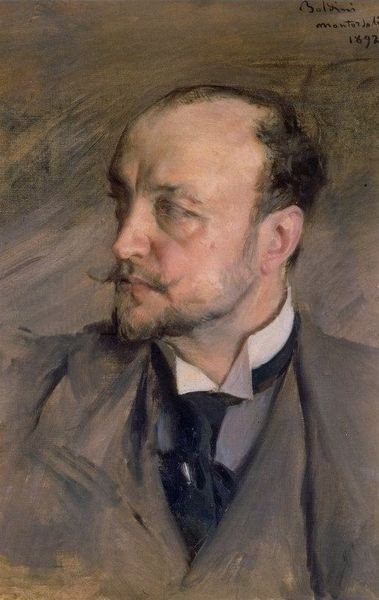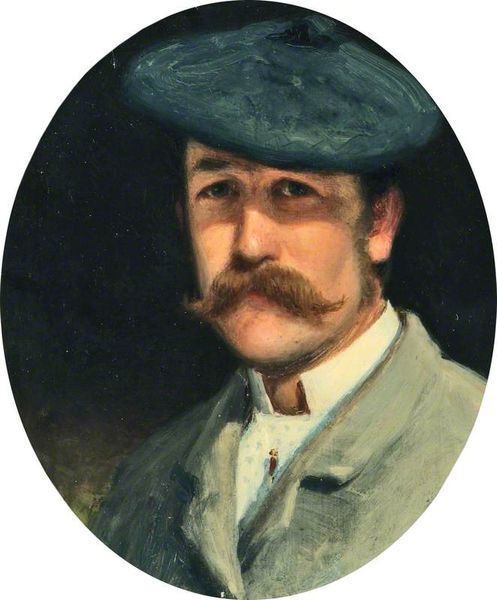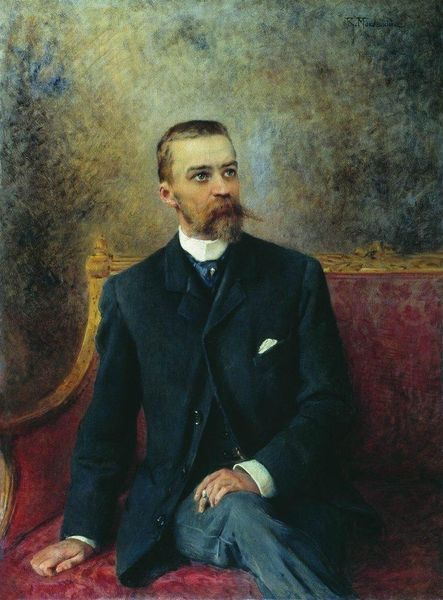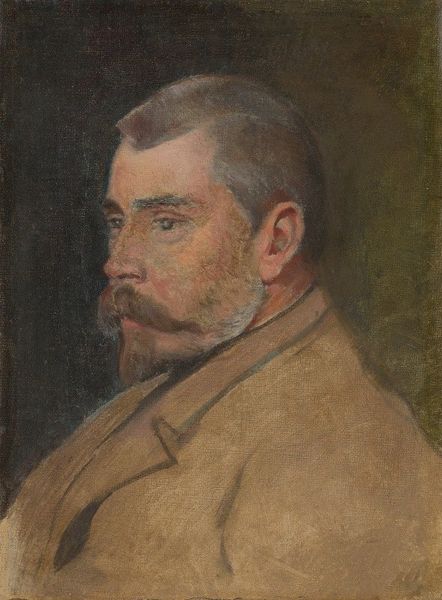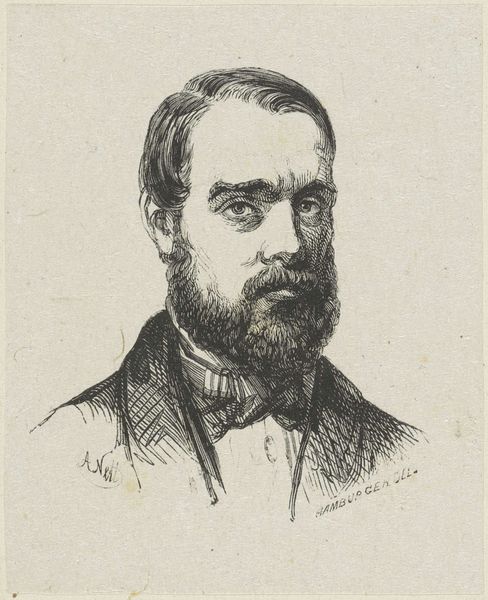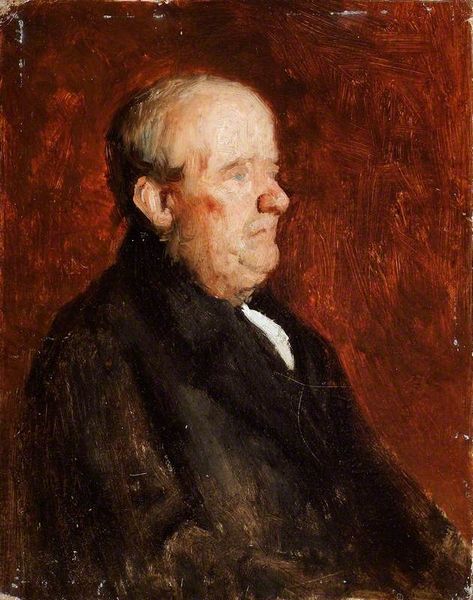
oil-paint, impasto
#
portrait
#
portrait
#
oil-paint
#
impasto
#
male portrait
#
portrait reference
#
portrait head and shoulder
#
human
#
animal drawing portrait
#
portrait drawing
#
facial portrait
#
portrait art
#
fine art portrait
#
realism
#
digital portrait
Copyright: Public domain
Editor: So here we have James Archer's portrait of 'Thomas Alexander Graham, Artist', in oils. I’m struck by the almost rough texture – that impasto gives a real sense of presence. What’s your take on this piece? Curator: Let’s think about oil paint itself. By the time this was painted, oil paint was readily available, commercially produced, wasn’t it? Consider what that meant for artists – mass production altering the traditional role and skillset of the artist. The *Artist* had to consider, negotiate, and adapt in light of industrialized production. Do you think Archer engaged with this at all in his work here? Editor: I suppose the thick application of paint *could* be a deliberate move, almost drawing attention to its materiality... a kind of rebellion against smooth, mass-produced surfaces, maybe? It certainly makes you focus on the surface. Curator: Exactly. The very physicality becomes paramount. How much choice did Graham, as the sitter, have over the artist or materials? Was Archer capturing or constructing a particular image of the ‘artist’ through these visible, tactile means of production? Think also about the labour involved, the social status implied... Editor: So, it's not just a portrait of an artist, but also a comment on the act of creating art itself within the system in which the materials are created? That shifts my understanding quite a bit. It's not just *who* it depicts, but *how* it was made and *why* those choices matter. Curator: Precisely. It pulls back the curtain on artistic production. Glad we could explore that together.
Comments
No comments
Be the first to comment and join the conversation on the ultimate creative platform.
